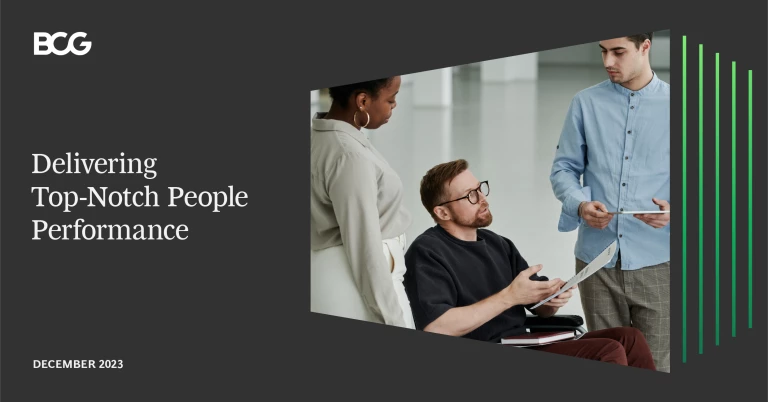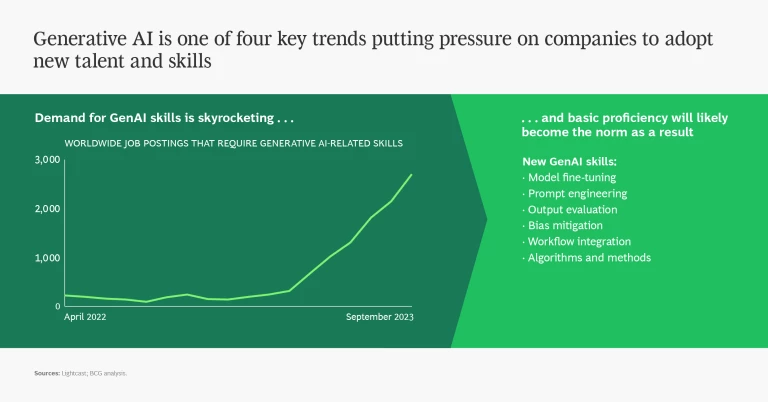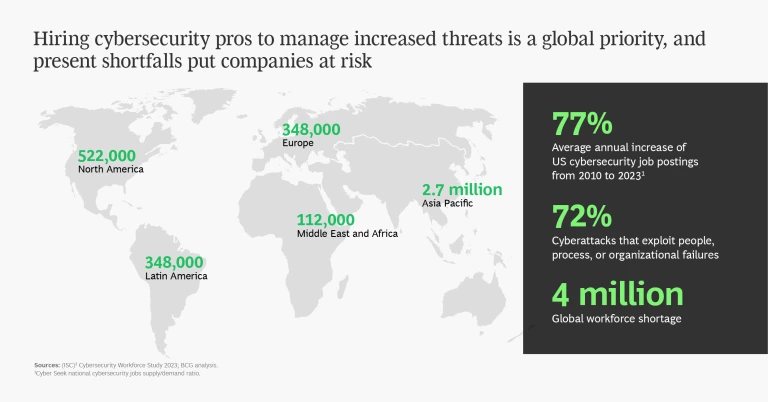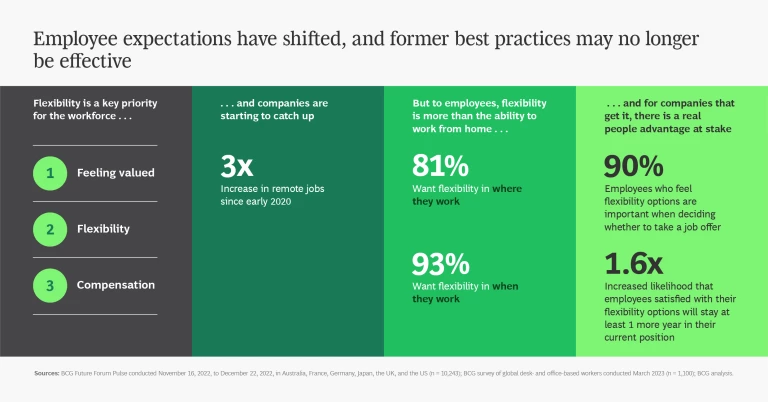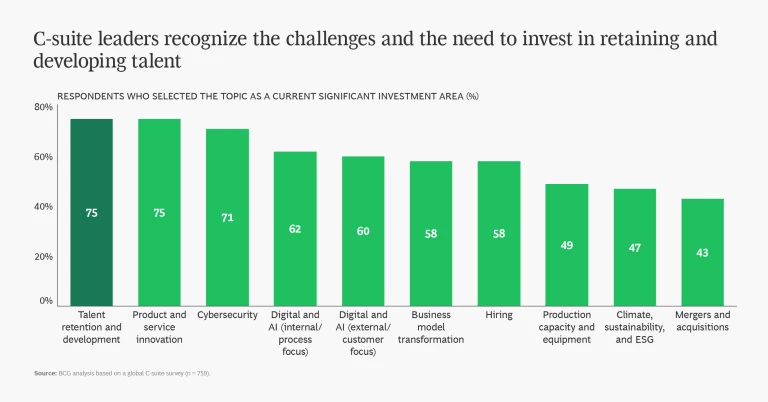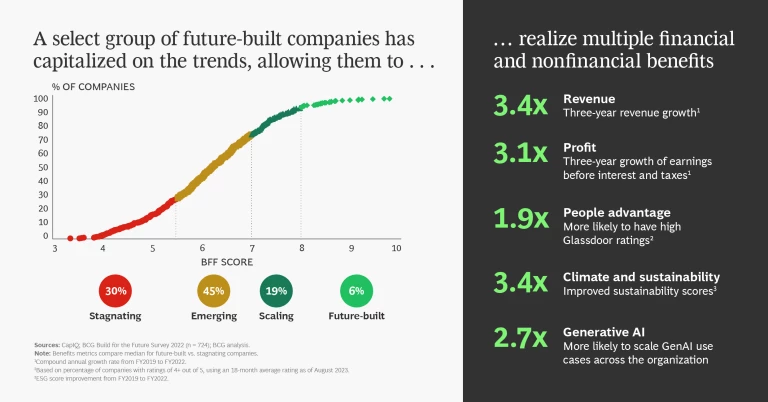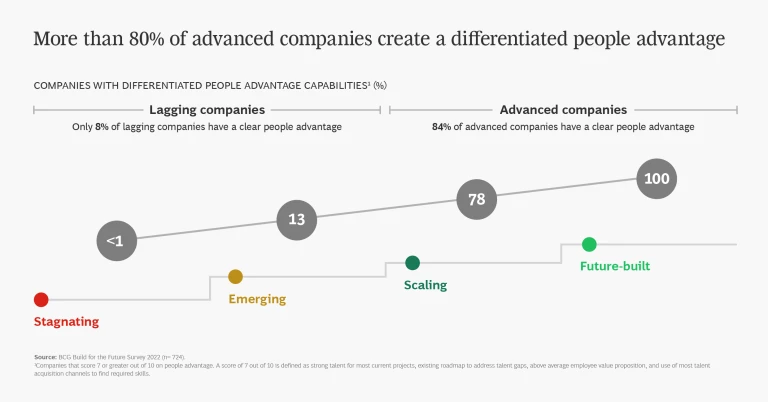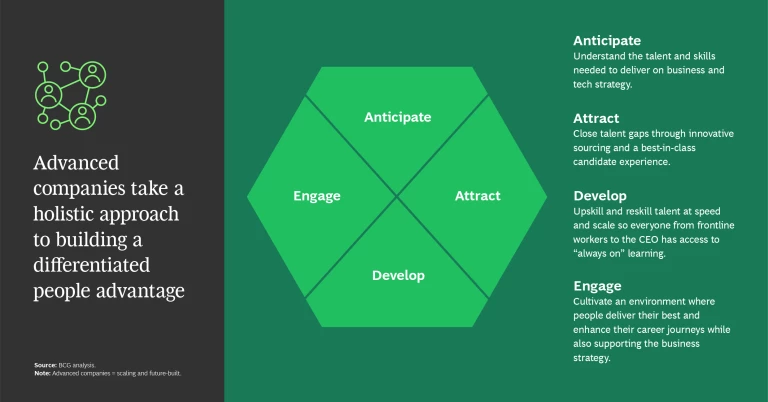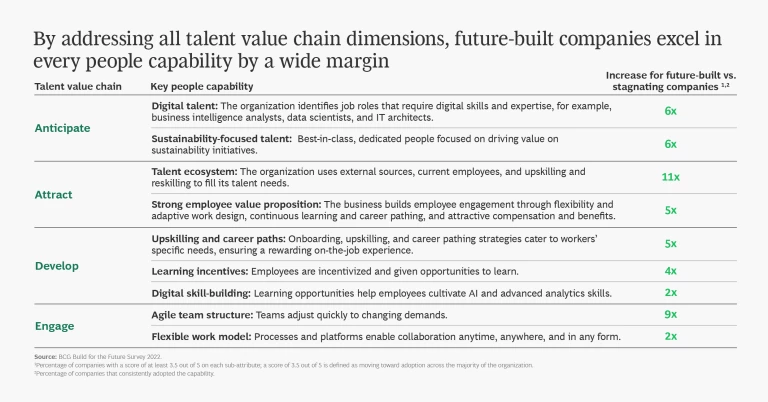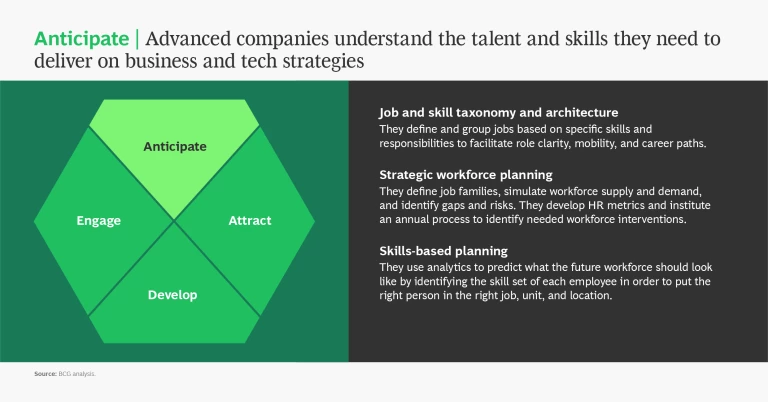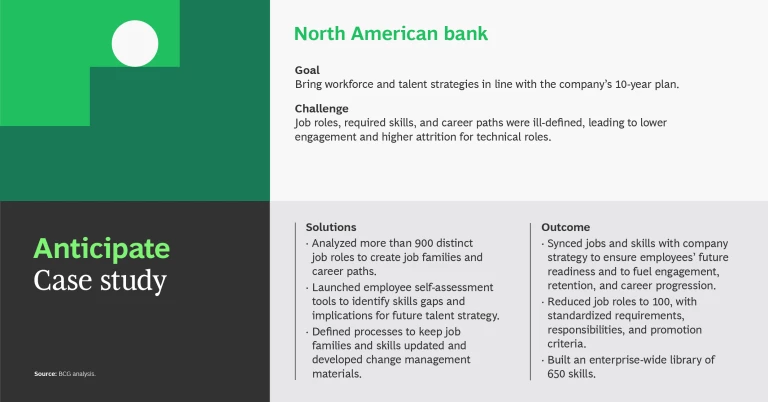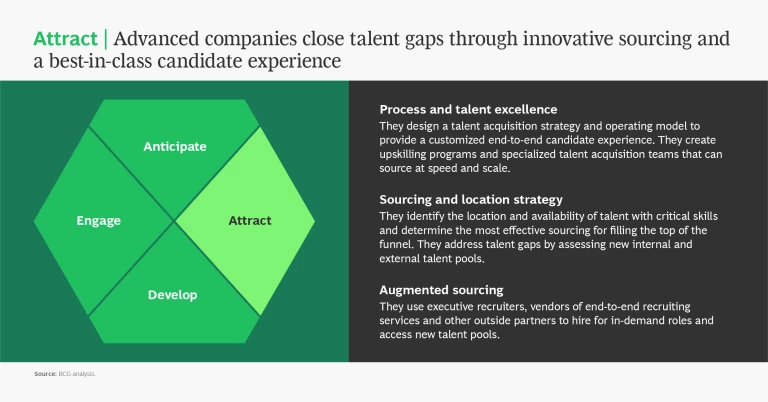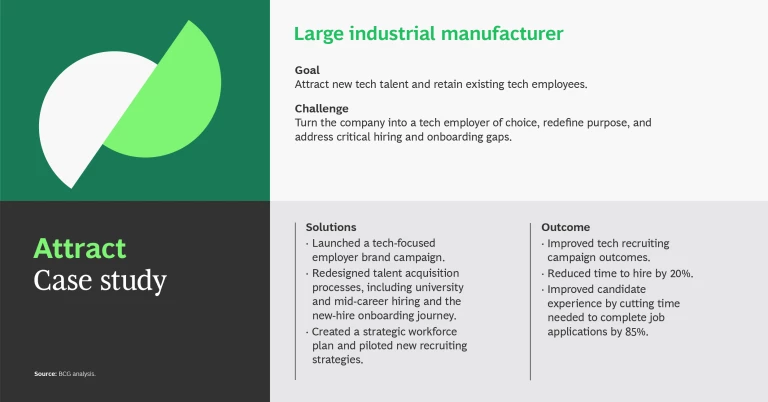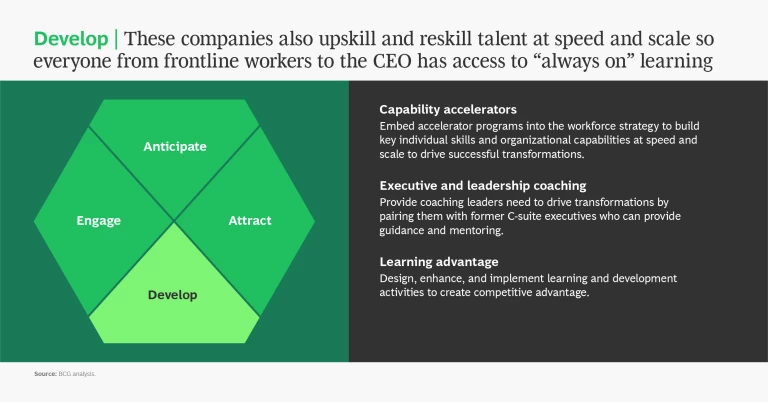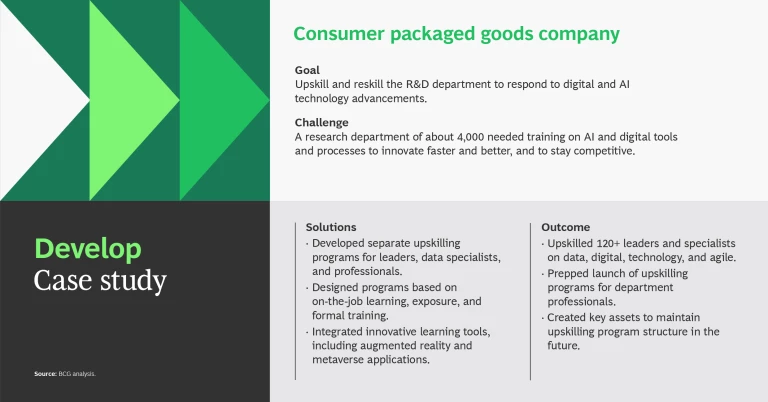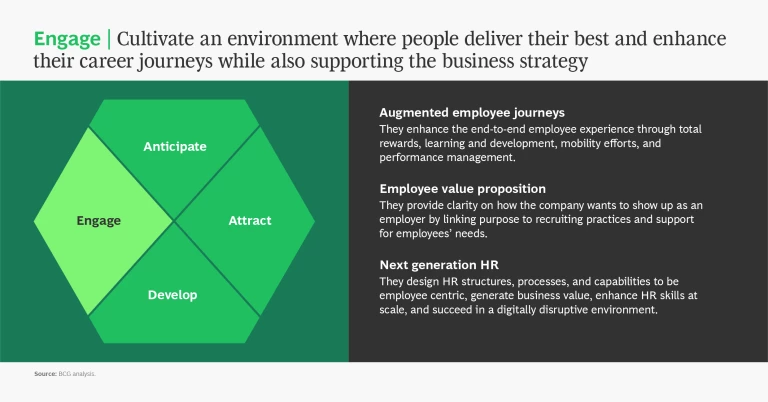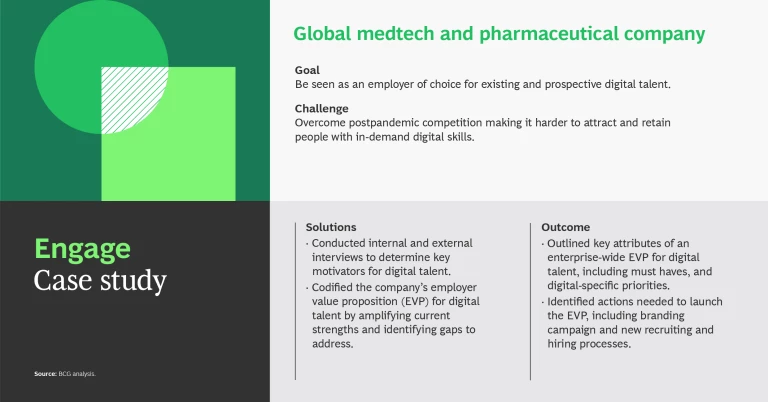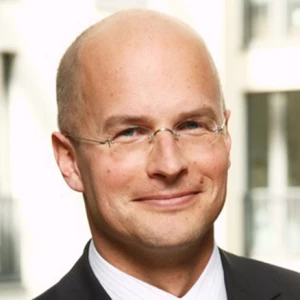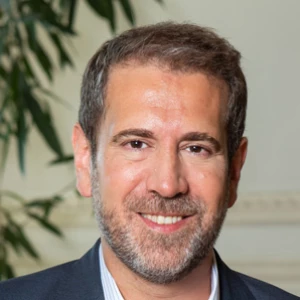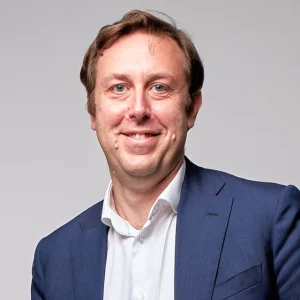The following insights are part of BCG’s Build for the Future series, based on three years of research conducted on digital transformations at major organizations around the globe.
The people practices that got organizations where they are today won’t help them in the future.
To respond to ongoing technology, hiring, and other trends, organizations have to cultivate a variety of new talent and skills . They need people who understand AI well enough to write prompts and integrate the technology into existing IT systems. They need a larger cybersecurity workforce to counter persistent attacks and technology security threats. They need more people with “green job” skills to meet ambitious net zero targets and address climate change. At the same time, employees’ expectations have shifted. Feeling valued and having flexibility are key priorities that organizations can’t ignore in their workforce and hiring practices.
Workforce issues are so important that 75% of C-suite leaders identify retaining and developing talent as a “significant” area of investment for their business.
According to our Build for the Future survey, the most forward-looking organizations take a holistic approach to adopting new people practices and adding new workplace skills. In the process, they create a people advantage that allows them to thrive and outperform competitors. (See “Build for the Future.”)
Build for the Future
Our latest survey asked all participants about:
- Five areas that are fundamental to success
- The emphasis of transformation efforts
- How successful transformation efforts have been
- The degree to which each of more than 50 potential influencing capabilities were in place
From this research, we identified the path that companies must take to become built for the future. We’ve reconciled the challenge of what these companies need to do (identifying which initiatives drive the most value by sector) with the challenge of how to do it (determining which capabilities drive success and how to build them fast). CEOs can tailor this new playbook to their company-specific change agendas. Learn more about our Build for the Future campaign
At a Glance
From our Build for the Future survey, we found that a small cadre of companies successfully capitalize on the trends. Companies we call “future-built” have six key attributes that set them apart from other companies. One of those attributes is the ability to develop a differentiated people advantage. According to our research, a full 100% of future-built organizations possess it.
These forward-looking enterprises develop a people advantage by focusing on four aspects of the talent value chain. They:
- Anticipate—Understand the talent and skills needed to deliver on business and tech strategy.
- Attract—Close talent gaps through innovative sourcing and by offering a best-in-class candidate experience.
- Develop—Upskill and reskill talent in the flow of work, at speed and scale so everyone from frontline workers to the CEO has access to “always on” learning and the impact is rigorously measured.
- Engage—Cultivate an environment where people deliver their best and enhance their career journeys while also supporting the business strategy.
Learn more about what it takes to build a differentiated people advantage in the slideshow below.
By the Numbers
Organizations’ people capabilities improve as they adopt more elements of the holistic approach we’ve outlined and progress from lagging, those organizations that are stagnating or emerging, to advanced, those that are scaling or future-built. (See Exhibit 1.) As organizations advance toward being future-built, they first must adopt agile ways of working, with teams that can adjust quickly to changing demands. Then they must optimize their talent ecosystem to attract job candidates from multiple internal and external sources. Finally, they must focus on digital skill building, providing people with opportunities to cultivate AI and advanced analytics skills.
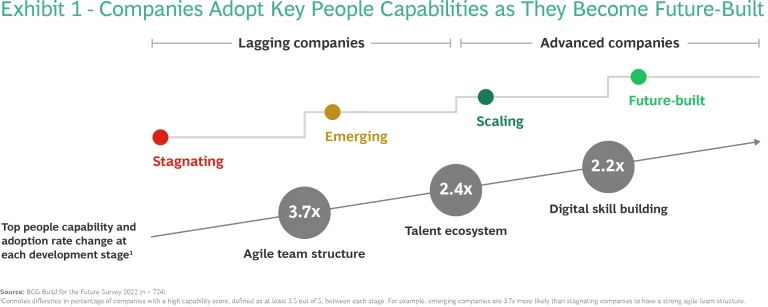
Advanced organizations identify critical digital talent and skills and understand the need to have the right people to steer digital and sustainability initiatives. It’s no surprise that across multiple industries, these organizations have a larger share of digital talent in their total workforce. (See Exhibit 2.) They also prioritize recruiting digital talent, with a third (29%) of these companies’ job postings requiring digital skills compared with 18% for stagnating and emerging companies.
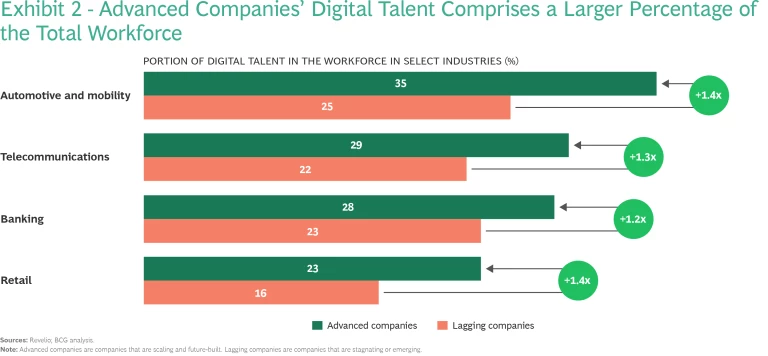
Putting People Advantage into Practice
The pace of change is increasing, and the half-life of digital and other skills is shrinking. You can’t wait for the next recruiting cycle or until you have a job to fill to find and hire people with digital or other key skills. To get the people capabilities you need as quickly as possible, consider doing the following:
Create a skills-based talent ecosystem. Organizations have multiple options for addressing capability gaps. For instance, filling talent openings can include providing upskilling and competency-based career pathing, as well as making external hires. Understand what skills your workforce has, what critical skills you need for the future, and the skills paths you need to offer people to fill the gaps. A true skills ecosystem uses skills as the basis for determining performance and managing talent.
Build a learning organization. Help employees to develop to the fullest of their career potential by weaving learning into the fabric of the organization. Encourage “always on” learning by embedding it into daily work and job tasks. Cultivate a culture that accepts failure as part of the learning process. Get managers actively involved in their direct reports’ learning journey. At the same time, maintain a strong connection between learning and the organization’s strategic priorities so the skills people develop serve their individual goals and those of the business.
Modernize talent processes but keep the human touch. You don’t get digital talent with analog HR. To attract and retain people with digital skills, you need to update modern workforce management tools by incorporating AI and advanced technologies into backend processes. Automating administrative tasks frees up time for staff to provide the human touch that employees and job candidates want in their interactions with HR and recruiters. Modernizing talent processes also means customizing your talent acquisition and management approach to be specific and attractive to different workforce segments.
Appeal to people’s functional and emotional needs. You get people in the door by offering job candidates opportunities to expand their skills and improve their careers. According to our research, what gets people to stay—especially digital talent —is offering them emotional support. Such support encompasses providing a position with work-life balance, strong relationships with both supervisors and coworkers, and interesting work. We’ve also found giving people opportunities to learn on the job can improve engagement.
Expand how you think about diversity, equity, and inclusion. Many initiatives target a core set of visible demographic minorities, but there are other ways to think about DE&I . For example, consider taking degree requirements off listings for jobs where a cybersecurity certification or on-the-job coding experience might be more relevant. It also helps to recognize that demographic factors, life context, and physical and mental differences can play important roles in shaping who employees are when they come to work, how they experience the workplace, and what they have to offer. Ultimately, helping all employees thrive fuels a long-term advantage for them and the organization.
Organizations need new talent and new skills to meet the challenges external forces and internal initiatives are creating. The pace of these changes is accelerating so quickly, enterprises can’t afford to put off adopting new strategies and investments to fill talent and skills gaps. A select group of forward-thinking organizations are meeting these challenges by developing a differentiated people advantage that stretches across the full talent value chain. They anticipate their workforce needs, attract in-demand talent, develop needed capabilities and skills, and engage the workforce. Their reward is higher revenue and earnings growth and employee engagement, improved sustainability metrics, and better use of the latest technology than companies with less-evolved people practices.

